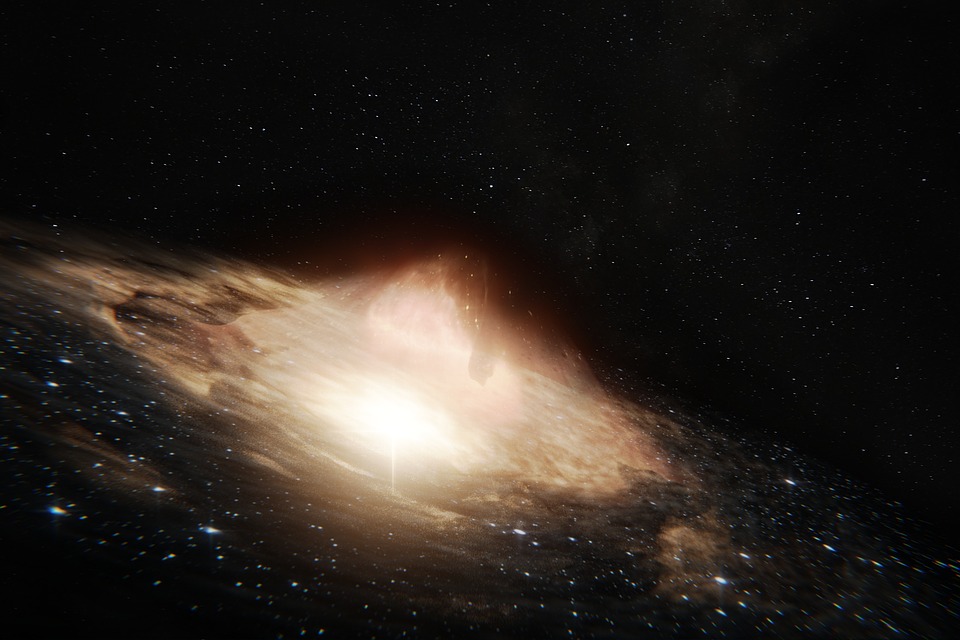
Quasars: An Astronomical Enigma of Time
For several decades, it has been known that radio waves are emitted from various areas in the heavens. But it was only after World War II that many scientists began a systematic study of radio sources, which are the areas emitting radio waves. The result was the development of a new branch of astronomy, known as radio astronomy.
With the help of detecting devices called radio telescopes, astronomers located the positions of thousands of “radio stars”, which are, more or less, sharply defined areas of radiation in the heavens. Sometimes these radio stars could be identified with visible objects in the heavens while sometimes they could not.
To understand how mankind came across quasi-stellar objects, we need to go back to the 20th century.
Discovery of Quasars

Going back to 1960, we come across an American astronomer called Alan R. Sandage who was engaged in photographing a portion of the heavens from which strong radio waves emanated. Upon studying his photographic plates, he found what was apparently a star in the exact position in which radio source 3C 48 was located.
The significance of this discovery lay in the fact that hitherto radio stars had been supposed to be either galaxies or else hot gaseous regions in our own galaxy – the Milky Way.
Had the American astronomer come upon the first radio source that could be identified as an individual star? Apparently this star or star like object was unusually bright. Its spectrum proved to be quite different from that of the typical star.
Three years later, an even brighter star like object was detected by a Dutch-American astronomer, Maarten Schmidt. Upon examining the spectrum of this object, he found that there had been a shift of various lines toward the red end of the spectrum. A reexamination was conducted by two other American astronomers, Jesse L. Greenstein ad Thomas A. Matthew, leading to the same results.
This discovery ended up creating a sensation among astronomers.
Back then, it was necessary to understand the significance of the shift towards the red end of the spectrum of light.
See, if the chemical elements whose spectral lines are being examined are in a star that is receding from the observer, the wavelengths will shift toward the red end of the spectrum. If the star is moving toward the observer, the wavelengths will shift toward the violet end.
It was the American astronomer Edwin P. Hubble who was the first astronomer to study the red shift systematically. He found that the greater the shift, the greater the speed of the star, along with the fact that the speed of recession was about proportional to the distance of the object.
As per the studies, the red shifts that had been noted in the star like objects were so great that it appeared certain that they must be a billion miles or more from the earth. Yet, even at these huge distances the star like objects were so bright that they must be emitting hitherto unheard of quantities of energies. But even if they were galaxies, the energy output would be so great that it could not be matched by that of any known galaxy.
Astronomers then began a search for other star like objects combining unusual brightness with strong radio emission and extreme red shifts. In the years that followed many such objects were discovered, the number came to well over a hundred within the space of five years. The name “quasi-stellar” object has since then been applied to them. And, this name is often shortened to quasars.
Several astronomers have noted a startling fact about these quasars. Their light fluctuates noticeably – in some instances quite remarkably – within comparatively short periods of time. On the other hand, some quasars were discovered to double their brightness within just twenty-four hours.
Now, these variations in brightness set a limit to these diameters of quasars.
Of course, the comparatively small size of quasars, if we assume that they are billions of light-years away, makes their tremendous outpouring of energy all the more remarkable.
The question then is how we can account for it?
Various theories were proposed back then. If you are interested to learn more about these theories, why don’t you come back for part 2?
You May Also Like

Blood Transfusion: Update on Irregular Agglutinin Research
2022-01-16
High Fliers Of The Animal Kingdom – The 9 Largest Birds That Roam Our Skies
2023-01-23

